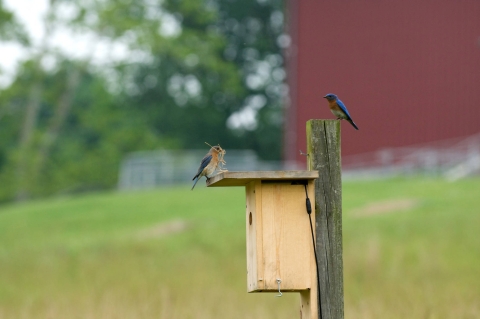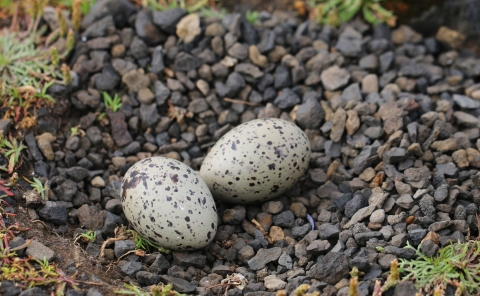Most bird nests are protected under the Migratory Bird Treaty Act (MBTA). This law says: “No person may take (kill), possess, import, export, transport, sell, purchase, barter, or offer for sale, any migratory bird, or the parts, nests, or eggs of such bird except as may be permitted under the terms of a valid permit…” Under the MBTA it is illegal to destroy a nest that has eggs or chicks in it or if there are young birds that are still dependent on the nest for survival. It is also illegal for anyone to keep a nest they take out of a tree or find on the ground unless they have a permit to do so issued by the U.S. Fish and Wildlife Service.
Under very limited circumstances, the Service may issue permits to take active nests. Nest removal permits are usually only issued when the particular nest is causing a human health or safety concern or the birds are in immediate danger. It is usually required that you wait for the nest to become inactive (contains no eggs or chicks and is no longer being used by birds for breeding) before destroying it. While it is illegal to collect, possess, or by any means transfer possession of migratory bird nests, the MBTA does not contain any prohibition that applies to the destruction of a bird nest alone (without eggs or birds in it), provided that no possession occurs during destruction. Even though destruction of nest by itself is not prohibited under the MBTA, nest destruction that results in the unpermitted take of migratory birds, or their eggs, is illegal and fully prosecutable under the MBTA.
Due to the biological and behavioral characteristics of some migratory bird species, destruction of their nests entails an elevated risk of violating the MBTA. For example, colonial nesting birds are highly sensitive to disturbance; destruction of their nests during or near the nesting season could result in a significant level of take. Even visitation to these rookeries by people getting too close and subsequently disrupting nesting activities, can result in take since young birds may be frightened, leave their nests prematurely, become displaced, and die from starvation as their parents return only to the vicinity of the nest site.
Some nests are hard to see and identify, making them more vulnerable to inadvertent destruction. Birds that nest on the ground in sandy or rocky areas are particularly difficult to see and identify, as are birds that nest in trees cavities or holes in the ground. In these cases, there may be no typical nest structure like what a tree nesting species might build. An example of this are shorebird nests which may appear to be just a small depression or scrape in the ground, perhaps lined with some twigs, stones, or shells, that can be very hard to identify as a nest. Another example are ground cavity-nesting species, such as burrowing owl or bank swallow. It can be difficult to detect whether birds or viable eggs are in a cavity. If these species are known to occur in the area, before destroying a nest of this type we recommend consulting with an expert who can help determine whether adults, eggs, or chicks are present.
Nests of bald and golden eagles are also always protected under the Bald and Golden Eagle Protection Act. Destruction of these nests requires a permit at all times, whether or not they are occupied and in-use.





